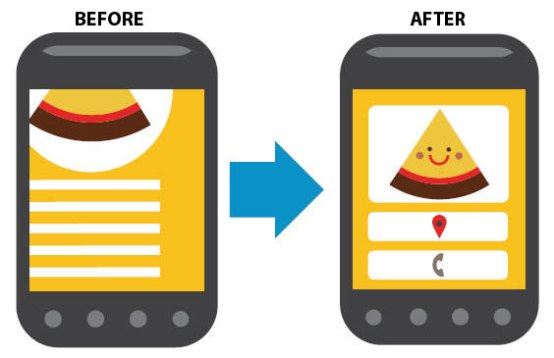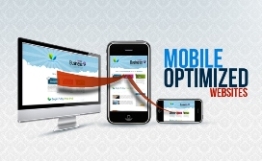Category Archives: Uncategorized
Top 5 ways of Lead Generation
1) Direct Mail to your Best Buyers
The fastest way to build your business is to target the best customers with a“laser-focused” approach with direct mail to your “best buyers.” This strategy alone has helped many businesses literally double their revenues in just 12 to 18 months (or less). This disarmingly simple strategy is one of the most effective and least expensive ways to market and grow your business… fast!

2) Buy leads from lead brokers and leads companies
Another great way to generate hot “ready to buy” leads is to purchase them from lead brokers and lead companies. These company’s sole focus is to generate leads and them sell them to companies like you who want a great source of consistent new business.

3) Buy leads from the Internet Search Engines
One of the most effective online strategies for generating leads is by attracting targeted traffic to your Website with the “Pay-Per-Click” Search Engines (PPCSEs). PPCSEs can and should become an indispensable part of your lead generating arsenal.
The 2 best PPCSEs are…
- Google AdWords http://www.google.com/ads/
- Overture http://www.overture.com/

4) Advertise
Studies show that 50% of all purchasing is motivated by advertising. Advertising is also one of the best tactics for generating leads that a company can deploy. Plus, it’s also the great way to build name recognition in the market which can get you publicity, “word of mouth” advertising, and other great benefits.
Here are a few tips for running an advertising campaign that brings you a high return on investment…
- Place ads in the most targeted publications that your target market reads.
- Consider inexpensive ads in e-mail newsletters and Web Sites that your target market reads.
- Use direct response ads – always ask the reader of your ad to respond for more information by phone, mail or via your Web Site.
- Be proactive. Have a follow-up system in place to get maximum results from your advertising dollar.
- Use a compelling headline that introduces the biggest benefits your product or service offers your client.
- Make them an offer that they’d be crazy to refuse so they’ll respond and become a new long-term client.

5) Referrals
Referral marketing is one of the most effective techniques for creating steady streams of prospects and clients. Plus, according to a survey, 70% of Internet users are compelled to visit new web sites through referrals.
Here are a few tips…
- Give your customers an incentive or additional products or services in return for referring others to you.
- Use a “Give a Gift” referral system where you invite your clients to give a free sample of your product or service to others as a gift. Referral gift certificates are great tools for this.
- Use a “Loss Leader” referral system. Here’s how it works… Advertise a free sample to get new clients to try out your product or service. This alone will get you more sales. Plus, you can build a perpetual referral generator by giving each person who tries your freebie 3 or more referral gift certificates to give away to their friends and family. Then, watch your new referral system take off and bring you a steady flow of new customers!
- Along with your mailed or e-mailed invoices to clients, include surveys that ask for feedback about how to improve company’s product or service. Be sure to ask for referrals in the survey as well. This works!
- Identify and create relationships with non-competitive companies and people who already serve your target market. Then partner with them and have them automatically refer you to their database of clients. Give them an incentive if possible and watch your business grow!

Mobile Friendly vs Mobile Optimized vs Responsive Design
Making a website mobile ready is pretty high on the request list for businesses and organizations developing a new website.
Approximately three quarters of the world’s population now has access to a mobile phone, according to a new study from the World Bank.
75% of World Has Access to Mobile Phones
With mobile devices ranging from handhelds to tablets, understanding how your website will display on the variety of formats is critical. When terms like mobile friendly, mobile optimized, and responsive design come up in development discussions, you’ll know the difference.
Mobile Friendly Website:
Mobile friendly refers to a site that displays accurately between your desktop/laptop computer and a mobile device such as a handheld phone (iPhone, Android, Blackberry) or tablets (iPad, Galaxy, etc.). While it will appear smaller on a phone and may not work perfectly on a touchscreen tablet, a mobile friendly website will be perfectly functional. Many developers view mobile friendly as a “best practice” for all website developments.
Ensuring your website is mobile friendly is critical. As we discussed above, the percentage of mobile users is quickly rising. What are critical features of a mobile friendly website?
- Text-based phone numbers, physical addresses, or email addresses that can trigger a call, directions, or email message from your mobile device
- Slideshows or image rotators that function without Flash support (Adobe Flash is not supported by Apple and some other mobile devices)
- Small image sizes to allow for fast loading over mobile connections—don’t count on even a 3G connection.
Mobile Optimized Website:
A mobile optimized site is a far more advanced website. Mobile optimized means that the site will reformat itself for a list of handheld or tablet devices. Larger navigation buttons, reformatted content, and differently optimized images appear when the user is on an iPhone or other device.
Why reformat? Reformatting allows the website to easily engage a large mobile audience when key buying decisions come up. More and more consumers are turning to their mobile devices right in the store. Having a website developed that allows the user to easily navigate and engage from the small screens of their handheld means reaching a decision faster.
What are some good formatting elements that go into a mobile optimized site?
- Simplified navigation that is “thumb” friendly with large touch-points, especially critical is contact information
- Reduced graphics that don’t interrupt the quest for critical information such as product listings or commoditized content
- Avoid making users type unless absolutely necessary
- Give users the option to view the desktop version of your site
Responsive Design Website:
As website design continues to evolve, a fantastic form of development has come into play. Responsive design is a method of developing a site that is completely flexible regardless of device. Rather than detecting a specific browser type or device type, the website automatically orientates itself based on the screen size of the device. A combination of reformatting and re-optimizing the site as a whole give a practical flexibility beyond imagination.
Responsive design, while more costly to develop, is the wisest development investment if you’re dealing with a consumer or audience-base that is active on mobile devices or need to make purchases on the go. Impulse purchases are obvious, but this is equally critical for commodity content such as blogs or news outlets.


